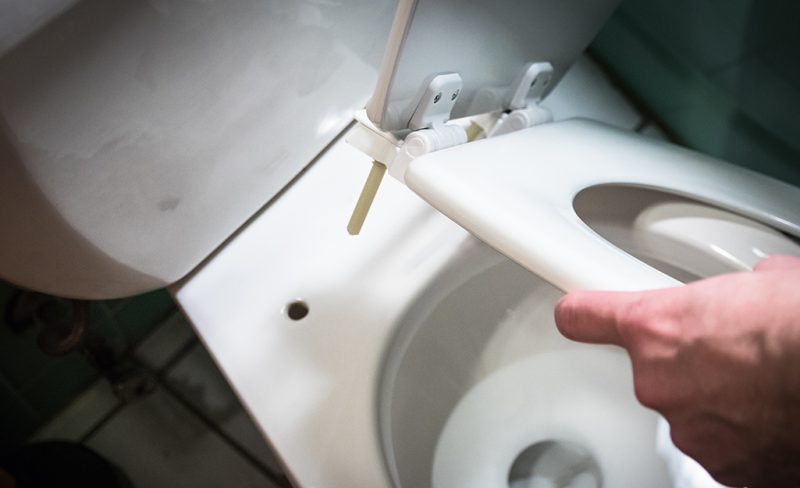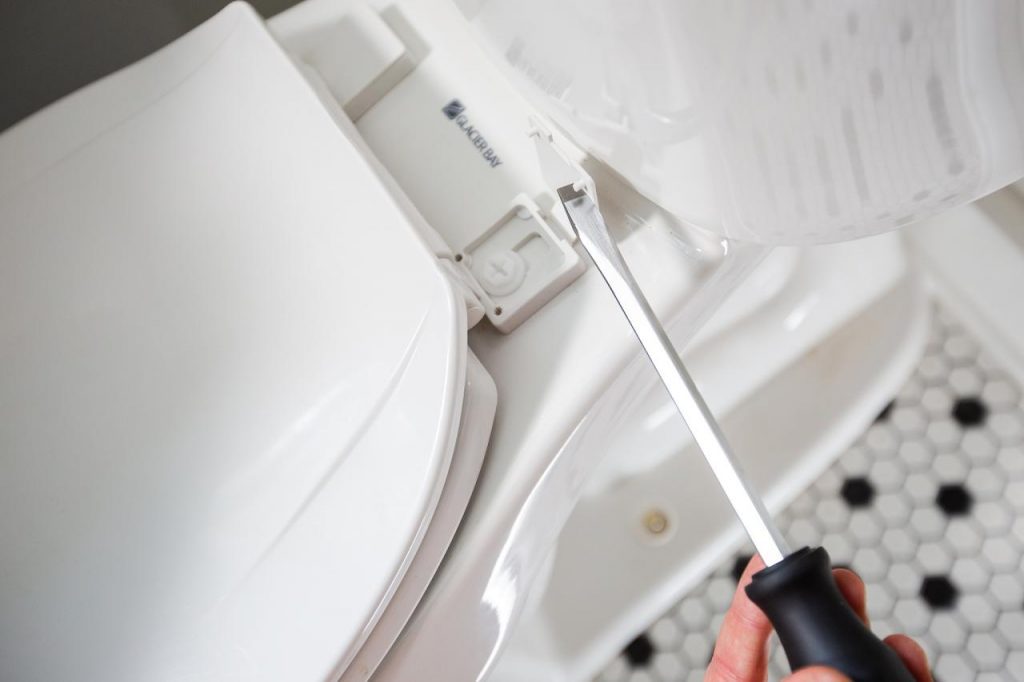Normal table conversation does not involve toilets. Some people find them a delicate subject, so if you bring them up at dinner, you risk getting kicked under the table. That’s a shame because we all have a funny tale about a toilet disaster. Something worse than a quick kick to the shins results from not talking about toilets.
You risk missing out on suggestions for your problematic toilet. If you don’t get answers, you might have to pay a fortune for repairs. Or, even worse, you could ignore the issue and cause a plumbing catastrophe. We’ve created a guide to help you determine how to replace toilet seats because knowledge is power.

What Equipment Do You Need to Replace a Toilet Seat?
To remove the nuts (typically wingnuts) that secure the toilet seat to the bowl, you’ll need a pair of pliers or an adjustable socket.
Depending on the design, you might also require a flathead screwdriver to pry off the plastic covers from the nuts. You can probably find most of these tools in your garage, or a cheap tool shed.
An installation kit may be included depending on the type of seat you choose. You may have to purchase the necessary replacement parts, such as nuts if you only replace the attachments and not the entire seat.
How to Replace Toilet Seat
Read the instructions below to learn how to replace toilet seats on your own, just like a pro.
Before you begin
Most toilets and toilet seat combinations are typical, and thus the stages are similar. Before installing a new toilet seat, read the instructions. Some seats require special procedures to fit properly and save the instructions till you’re done installing to ensure everything was done.
If the new seat has replacement hardware, store it so you can find it later. Start the job only after you have all the necessary tools and are confident you will complete it.
Clean the old toilet seat
You should ensure the cleanliness of your current toilet seat before attempting to remove it for replacement. You can eliminate most bacteria with a simple bleach and water solution. Vinegar and borax can be used as natural disinfectants, or you can use a commercial cleaner.
To prevent the growth of bacteria, pay close attention to the bolts and crevices in your old seat while you clean it. Since you’ll be near the toilet, you should also clean the floor and the bowl. A little work may get you a clean workspace, which will greatly aid the speed and ease with which you can replace the toilet seat.
Remove the old seat
To get the seat off the back of the bowl:
- Please take off the covers over the bolts holding it in place.
- Turn the nuts counterclockwise to loosen them from the bolts, then take them off with the washers.
- Remove the old toilet seat and its hinges and lay them aside for trash collection.
Using a spray of penetrating oil and some tools, you can loosen the old toilet seat bolts if they prove difficult to remove.
Attach the new seat
To secure the seat to the bowl, bolts are often inserted via two holes. The type of toilet you have will determine which hole you use. To ensure the seat fits properly, set it on top of your toilet and examine it from above to see which holes line up.
If the two holes are only slightly off from one another, pick the one that best corresponds to the holes on your bowl and the general position of your seat. Use the front holes if you want your new seat to be set further back. The second set is more closely tailored and is recommended for a more comfortable fit.
Slip the bolts into place
Align the new toilet seat, then use the bolts provided to secure it in place. Before you tighten any bolts or nuts, be sure the bolts are inserted directly through the holes on each side of the seat.
Check the seat alignment if the bolts aren’t going through easily. Do not use force because you may damage the toilet. Adjust the toilet seat’s mounting position on the bowl so you may tighten the bolts without a hitch.
Try out the new chair
Finally, after you’ve installed your new toilet seat, make sure you can move the seat freely. Check the hinges and swaying of the seat by opening and closing it several times.
Possibly retightening the bolts is required if this occurs. Remember that your seat can get unfastened over time and that you may need to readjust it from time to time.

Types of Toilet Seats Available to Replace
Round toilet seat
The conventional design for a toilet seat is a round one. These seats aren’t quite circular, but they aren’t much more elongated than wide ones. Similar chairs typically measure 16 inches in length and 14 inches in width. A round toilet seat is universal and should fit any regular loo.
Elongated toilet seats
On elongated toilet seats, the distance between the mounting hole centres and the front edge of the bowl is approximately 18.5 inches. Because of their bigger dimensions, more room is required to accommodate them.
Aside from the standard round or oval design, different designs, such as the D-shape and the square, are available. These individuals are, nevertheless, uncommon.
Oval Toilet Seat
Although oval toilet seats have a more contemporary style, they take up more room than round ones. The typical length of an oval seat is 18 or 19 inches, and a smaller bathroom might not be the best place for this seat. However, an oval seat might complement a more modern bathroom design if you have room for it.
Important Toilet Seat Replacement Safety Advice
Because they deal with waste, restroom stalls provide excellent conditions for the growth of pathogenic bacteria. Use the following guidelines before beginning to work on one.
- Using your bare hands to adjust the seat position is not a good idea. Put on some rubber gloves instead. These things are readily available at low cost at any nearby retailer.
- Removing the current seat from the bowl and cleaning it before installing a new one is important. Then, before installing the new one, thoroughly scrub the bowl.
Conclusion
Installing a new toilet or replacing the seat on an older model is a simple process that should take less than an hour. If you’re in the market for a new toilet and found this article useful, and we hope you now know how to replace toilet seats, several options will work for you.
We appreciate your time spent reading this and wish you a pleasant day.